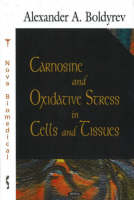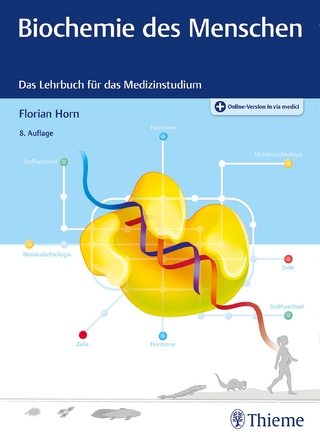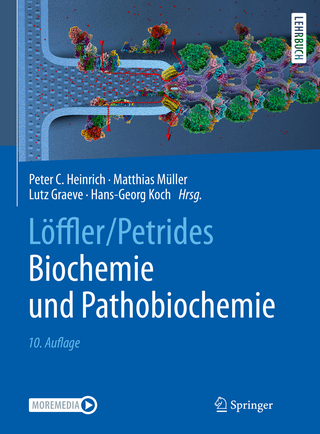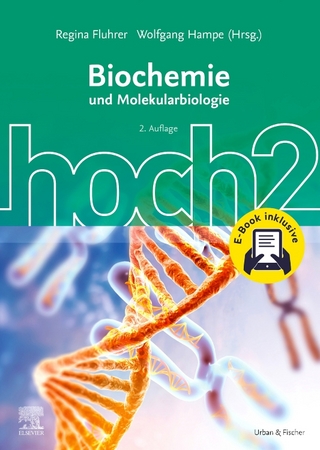
Carnosine & Oxidative Stress in Cells & Tissues
Seiten
2007
Nova Science Publishers Inc (Verlag)
978-1-60021-411-0 (ISBN)
Nova Science Publishers Inc (Verlag)
978-1-60021-411-0 (ISBN)
- Titel ist leider vergriffen;
keine Neuauflage - Artikel merken
Summarises the knowledge on metabolic transformation of carnosine in excitable tissues of animals and human beings and analyses the nature of its biological activity. This work concludes by demonstrating the ability of carnosine to protect brain and muscular tissues from oxidative injury during exhausting exercise, or neurodegenerative diseases.
The main aim of this new book is to summarise the knowledge on the metabolic transformation of carnosine in excitable tissues of animals and human beings and to analyse the nature of its biological activity. At the beginning of monograph, the short history of the problem is stated. Distribution of carnosine in tissues, its appearance in ontogeny of vertebrates and correlation between carnosine content and functional activity of tissues are discussed. Chemical properties of carnosine and its natural derivatives and their ability to bind heavy metals and protons in water solution are documented. Special attention is paid to free radical quenching ability and to anti-glycating action. Biological activity of carnosine and carnosine containing compounds was tested using biological models of several levels of complexity, starting from individual enzymes and acellular mixtures and finishing to living cells and survival animals. Effects of carnosine on the whole animals under ischemic, hypoxic and other extreme conditions are described. In conclusion, the ability of carnosine to protect brain and muscular tissues from oxidative injury during exhausting exercise, extreme loading or neurodegenerative diseases is demonstrated. Based on these properties, carnosine is postulated to be a potent protector of human beings from oxidative stress.
The main aim of this new book is to summarise the knowledge on the metabolic transformation of carnosine in excitable tissues of animals and human beings and to analyse the nature of its biological activity. At the beginning of monograph, the short history of the problem is stated. Distribution of carnosine in tissues, its appearance in ontogeny of vertebrates and correlation between carnosine content and functional activity of tissues are discussed. Chemical properties of carnosine and its natural derivatives and their ability to bind heavy metals and protons in water solution are documented. Special attention is paid to free radical quenching ability and to anti-glycating action. Biological activity of carnosine and carnosine containing compounds was tested using biological models of several levels of complexity, starting from individual enzymes and acellular mixtures and finishing to living cells and survival animals. Effects of carnosine on the whole animals under ischemic, hypoxic and other extreme conditions are described. In conclusion, the ability of carnosine to protect brain and muscular tissues from oxidative injury during exhausting exercise, extreme loading or neurodegenerative diseases is demonstrated. Based on these properties, carnosine is postulated to be a potent protector of human beings from oxidative stress.
Preface; Carnosine and Related Compounds: The History of the Problem; Histidine-Containing Dipeptides and Functions of Excitable Tissues; Oxidative Stress in Excitable Tissues; Histidine-Containing Dipeptides as Hydrophilic Tissue Antioxidants; Effects of Histidine-Containing Dipeptides under Conditions of Disturbed Blood Circulation in Heart and Brain; Prospects of Pharmacological Applications of Carnosine; Histidine-Containing Dipeptides as Regulators of Cellular Homeostasis (Conclusion); Protection of Proteins from Oxidative Stress - A New Illusion or a Novel Strategy (Addendum); Index.
| Erscheint lt. Verlag | 6.9.2007 |
|---|---|
| Zusatzinfo | Illustrations, unspecified |
| Verlagsort | New York |
| Sprache | englisch |
| Maße | 260 x 180 mm |
| Gewicht | 850 g |
| Themenwelt | Studium ► 1. Studienabschnitt (Vorklinik) ► Biochemie / Molekularbiologie |
| Naturwissenschaften ► Biologie ► Zellbiologie | |
| ISBN-10 | 1-60021-411-8 / 1600214118 |
| ISBN-13 | 978-1-60021-411-0 / 9781600214110 |
| Zustand | Neuware |
| Haben Sie eine Frage zum Produkt? |
Mehr entdecken
aus dem Bereich
aus dem Bereich


